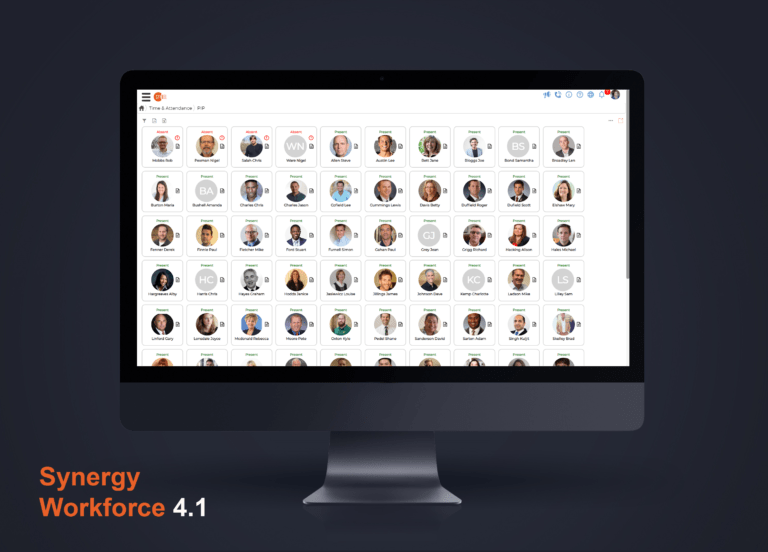Access Control in Education Institutions

Purpose of Access Control in Educational Premises
At its most basic level, access control is a system for enabling or preventing persons from entering or exiting a location – whether it is a website, room or a cupboard.
Its secondary functions include recording any movement in and out of locations and providing data trails for audit, traceability, compliance or improvement purposes.
The majority of access control systems rely on a “credential” to recognise and validate the person or asset transiting in and out of a location. This credential may be something the person has (key, card, identification tag), something they know (password, PIN) or something intrinsic to them (biometric data such as iris recognition, fingerprints).
In many systems, more than one layer of credentials may be required, while some systems require a second party credential (second keyholder or visual recognition by an approved inspector via CCTV link).
The more layers and subsystems, the greater the complexity of integrating the systems and storing, accessing and making use of the data.
Within educational premises, the drivers for access control are:
- Safety of students, staff and authorised visitors
- Legal compliance and statutory duties placed on governors, school heads, local authorities and other bodies
- Protection of valuable assets
- Security and protection of data gathered by the organisation and held on IT systems
- Management and control of security across different venues, sometimes at the university level, spread across a city base
Challenges Presented by Educational Premises
Educational premises, by nature, present a number of access control challenges that may not apply to other public buildings or private/commercial spaces.
- The age group of the user population and the need to consider all user groups (including people with disabilities), which mitigates the use of complicated systems.
- The safety requirement for swift and safe egress in the event of a fire or any other emergency.
- The need to avoid a ‘fortress’ atmosphere to maintain mental health and well being for students.
- The ‘open’ nature of many educational premises (such as IT and leisure facilities), with either full public access or permitted group access being increasingly required.
- The growing trend of clustering various community services, such as health centres and local community policing, in an educational complex.
- The incorporation of completely different facilities such as the student union, library and accommodation (at the university level).
- The constantly-changing time tables, which require the greater use of facilities throughout the day (breakfast clubs, study periods).
- The widespread campuses of many educational premises that have public access roadways running through their site (roads, rights of way, public footpaths).
- The age of many buildings, which can make repairs, modifications and cabling expensive and problematic.
- The skills and availability of non-teaching support staff with time and ability to implement and maintain an effective access control system, where success is often reliant on human behaviour and habitually-following good practices (persuading pupils not to swap ID cards or credentials, quickly reporting lost credentials to the appropriate person, and so on).
- The complexity involved in having an elaborate system in place (the accretion of systems so that a user will need one credential for access, another credential to use equipment such as photocopiers/printers, and a third for access to cafeteria or library facilities).
Core Issues in Implementing Effective Access Control
For many educational premises, the core issues lie in three main areas: responsibility, understanding and finance.
Responsibility
One of the key issues is to establish the ‘responsibility chain’ for security matters. This particularly applies to schools that move from local authority supervision to having more autonomy under other models such as Academies and the new Free Schools. In most schools, legal responsibility will lie with the governing body and the head teacher. Day-to-day responsibilities may then be devolved between the teaching and support staff, including estates, property managers or bursars/administrators. Finally, some aspects may be outsourced (manned guarding, managing CCTV) to private contractors and/or involve local community police initiatives (knife crime prevention and use of search wands). Unless the responsibility chain is mapped, recorded and communicated, any access control system will fail at the first hurdle and, in the real world, all of the above groups are busy, with multiple responsibilities and concerns, so sustaining security as an area of attention is challenging but essential.
Finance
There is no question that financial constraints are now a major factor in decision-making at all public sector organisations. If educational institutes are to be built from scratch on the ‘green field’ sites, installing a purpose-designed full access control system is still feasible. However, if the organisation is looking to overhaul, renew or extend an existing system, the investment will compete with many other priorities. At the same time, educational bodies would be unwise to ignore the offsetting financial risk of claims for compensation, which would be inevitable in the event of a serious security breach.
Student (Pupil) Experience
Universities, in particular, are increasingly concerned about the quality of student experiences. With rising tuition fees and increased competition for places, it is important that students not only feel safe but also feel free to move around campus with minimum fuss. Properly-designed access control systems will enhance the student experience.
Options and solutions
Faced with the complex task of balancing competing priorities, how can educational bodies navigate an effective way forward, ensuring adequate security within the financial and technical parameters of their premises?
The following points may act as useful indicators:
- Implement an up-to-date risk assessment using the free survey services provided by many leading access control providers and engaging in a serious debate within the governing and management structure about the level of risks in different spaces/times. This risk assessment must start with the likely level of severity and frequency of threat to student security and safety, quickly followed by the safety and security of teaching and other staff, and then considering the security of other visitors and users of the site. It is important that this risk assessment is informed by credible, relevant statistics and not by headlines, rumours, urban myths or local prejudices.
- Having identified the risks, consider the number of barriers or preventive measures that need to be implemented to provide the commensurate level of security. How long would each barrier take to be breached and how quickly would an alarm be raised and a response mobilised? Finally, take a hard look at the likely level of loss and the consequences. While pupil security may be paramount and, hence, justifies complex access control, it may not be justifiable in real terms to apply the same criteria to assets in the IT lab or sports centre, however valuable they may be. Factor the quality of the student (and teacher) experience by considering the ease with which secure movement can be achieved and how many different credentials are considered (keys, pin codes, fobs, cards etc.).
- Traditionally, access control systems have been able to secure only 20% of the doors. This number is increasing rapidly with the introduction of low-cost wireless technology. This can also reduce the number of credentials in use, if planned properly.
- Select appropriate technologies. You may not need a full access control functionality on all the doors of your establishment. Differentiate between the functionalities you really need in different areas and significant cost savings can be achieved. Keyless institutions are now a reality.
- If a complex already has an existing access control system but now needs an update, it can be done with compatible wireless technologies. By doing this, you will avoid the need for a full system replacement and hence achieve the extension of the access control system in a very cost-effective manner.
Safeguard your students, staff, facilities and assets with Access Control System Edureg by Synel, one of the most efficient and flexible solutions in the UK. This system interfaces seamlessly with the existing school systems and enables student registration using card-based or fingerprint-based solutions for each period, without requiring any help from the teachers.
- Offers easy-to-use solutions with simple and user-definable parameters
- Provides offline, online and wire-free options
- Gives a web-based user solution
- Works through multiple user groups, defined on the basis of usage
- Provides you with a live view through a guard screen
- Ensures that students have access only to required rooms
- Offers an advanced visitor management module
- Works with user-definable time zones and calendar operations
- Gives CCTV integration, defined with specific event triggers
- Provides fire link to fire panel with auto fire report
- Supports all electronic gates, doors, turnstiles, barriers and lifts on campus
More importantly, these technological systems are scalable. It’s unlikely that anything we install should be replaced for at least five to seven years. As your campus grows, it is easy to add functionalities as and when they are needed, replacing outdated parts of the system with the latest in modern technology. That way, you won’t need to install a whole system from the ground up, every time you plan to grow.
Do get in touch with Synel at Tel.: 0208 900 9991 or email: [email protected] for the latest in campus security and access control systems.
If you enjoyed this blog post, you can also read … How Access Control Can Increase Safety in Schools










